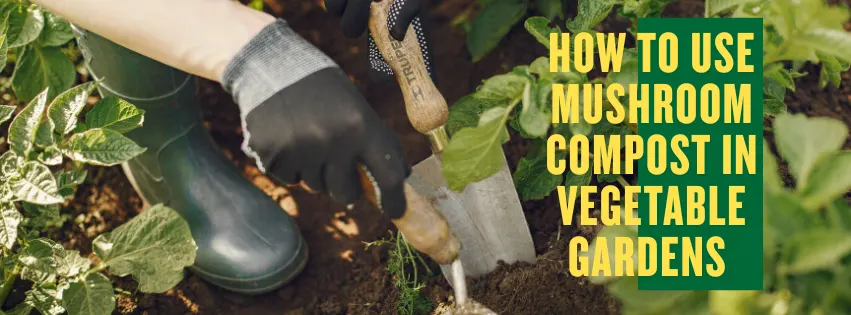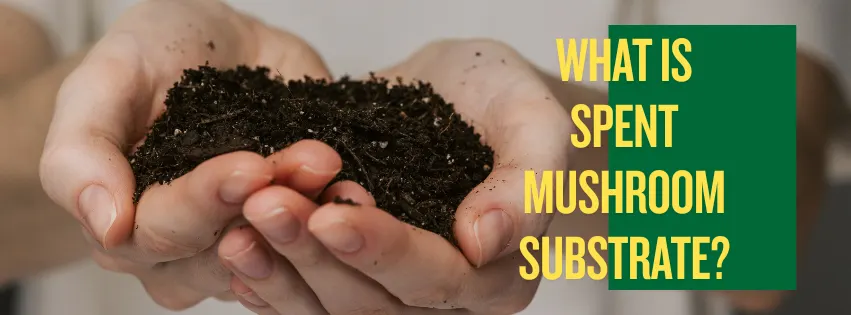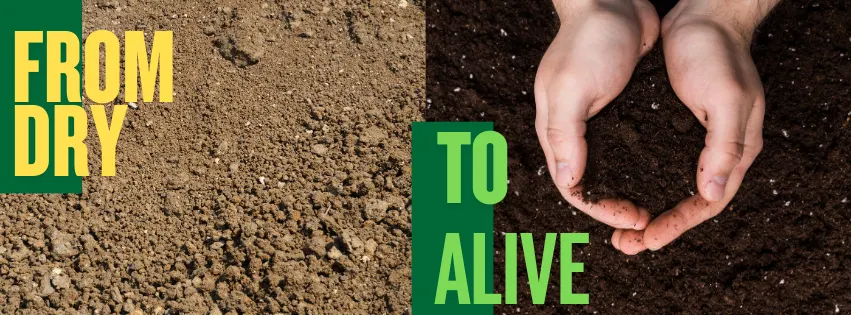
A Secret for Thriving Vegetable Gardens
Vegetables love living soil. Whether it’s juicy tomatoes, crunchy cucumbers, or earthy potatoes, all thrive when the soil is fertile, airy, and moisture-retentive. One of the most effective, yet often overlooked, soil enhancers is mushroom compost for vegetables — also known as spent mushroom substrate (SMS), mushroom soil, or mushroom waste fertilizer.
Healthy soil means healthy vegetables.
What is Mushroom Compost?
Mushroom compost is the leftover growing medium after mushrooms are harvested. It usually contains straw, poultry manure, gypsum, and other organic matter partially broken down by mushrooms.
Unlike traditional compost, mushroom compost application in vegetable gardens offers:
Rich organic matter and calcium (balances acidic soils).
Moisture retention (reduces watering).
Slow-release nutrients (steady crop growth).
This makes it one of the best choices when selecting compost for tomatoes, potatoes, and leafy greens.
Benefits of Mushroom Compost for Vegetables
- Improves soil structure: Prevents compaction, helps root expansion.
- Retains water: Reduces irrigation, vital for summer vegetables.
- Balances soil pH: Corrects acidic soils common in many regions.
- Cuts chemical fertilizer use: Acts as a natural fertilizer alternative.
- Boosts long-term fertility: Builds a resilient soil microbiome.
Step-by-Step Guide: How to Use Mushroom Compost in Vegetable Gardens
1. Preparing the Soil
Loosen vegetable bed soil with a spade or hoe.
Remove weeds and residues.
Ensure proper drainage.
2. Dosage & Application
General rule: Mix 1 part mushroom compost to 3 parts soil.
Raised beds: Spread 2–3 inches of mushroom compost, mix into top 6 inches.
Containers: Use 25–30% mushroom compost in potting mix.
3. Best Vegetables for Mushroom Compost
Mushroom compost is especially effective for:
Tomatoes – prevents blossom-end rot, improves yield.
Potatoes – better tuber formation, disease resistance.
Cabbage family (broccoli, cauliflower, kale) – thrives on calcium-rich soil.
Leafy greens – spinach, lettuce, fenugreek get bigger leaves.
Peas & beans – benefit from slow-release nitrogen.
⚠️ Avoid using mushroom compost for acid-loving crops like blueberries.
4. When to Apply
Before planting: Mix into soil 1–2 weeks before sowing or transplanting.
During growth: Top-dress mid-season with a thin layer around plants.
5. Maintenance Tips
Rotate crops for balanced soil health.
Mulch to lock in compost moisture.
Combine with vermi-compost for extra microbial life.
Mushroom Compost vs Traditional Compost in Vegetable Gardens
While traditional compost is good for overall soil health, mushroom compost offers specific advantages for vegetables:
Moisture-saving properties – ideal for summer vegetables.
Calcium enrichment – reduces blossom-end rot in tomatoes and peppers.
Slow-release nutrition – keeps crops fed throughout the season.
Global & Indian Context
In Europeand USA, gardeners widely use mushroom compost for tomatoes and potatoes.
In India, mushroom farms in Punjab, Haryana, and Uttarakhand produce tons of SMS. Farmers often discard it, yet it could be a low-cost fertilizer for vegetable farmers.
As M.S. Swaminathan said: “If conservation of natural resources goes wrong, nothing else will go right.” Using mushroom compost ensures nothing goes to waste.
Important Don’ts When Using Mushroom Compost for Vegetables
Mushroom compost is powerful, but it must be used wisely. Here’s what you should avoid:
Don’t use fresh mushroom compost
Fresh SMS contains excess salts and ammonia that can damage vegetables.
Always allow it to age for 6–8 months before using. Proper curing makes it safe and plant-friendly.
Don’t use it as the only soil
Mushroom compost should supplement soil, not replace it.
Mix with garden soil at a 1:3 ratio for balanced growth.
Don’t overapply
Too much can raise soil alkalinity.
Use a 2–3 inch layer once per season, mixed into the topsoil.
Don’t apply immediately before sowing seeds
Even aged compost should be incorporated at least 1–2 weeks before planting so it blends with soil.
Don’t use for acid-loving crops
Avoid mushroom compost for blueberries, strawberries, and some ornamental flowers that need acidic soil.
Give Your Vegetables a Healthy Soil Partner
When it comes to mushroom compost for vegetables, the verdict is clear: it’s a powerful soil improver, eco-friendly fertilizer, and moisture-saving conditioner.
Whether you’re a farmer with acres of land or a home gardener with a few pots, mushroom compost can make your vegetables healthier, tastier, and more resilient.
Try mushroom compost in your vegetable garden this season. Your soil will be richer, your vegetables happier, and your farming more sustainable.
Also Read:


